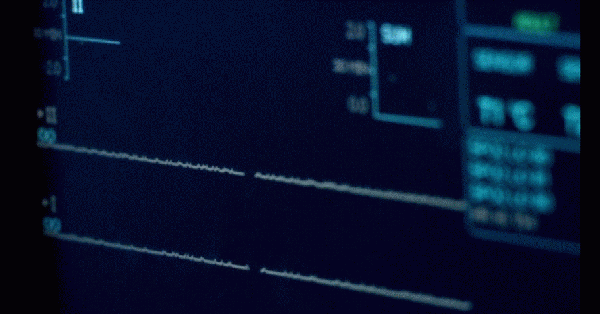I never actually spoke to the woman. By the time I made it down to the emergency ward, she was already intubated, the tubes and wires protruding from her mouth, eyes glazed in the stupor of sedation. Her tongue, fat and bloodied by the trauma of her arrest, lolled thickly against her lips.
The room itself was empty, absent of nurses and physicians who, having completed their jobs, had returned to their posts to write their notes, flirt, and complain among themselves. It seemed large, looming and cavernous. The woman herself was small, and around her lay the decorations and detritus of emergency care — wasted medications, empty saline bags and stripped gloves. A small pool of blood has formed on the floor beneath her, although she was not clearly bleeding. One foot, the left one, was uncovered. In my mind then, I thought the woman looked lonely.
I had never been in the emergency ward before. Emergencies made me nervous — the flood of adrenaline that inspired so many produced nothing in me but the unfortunate tell of a hand tremor, which rattled my stethoscope and ruined my suturing. My passion was for outpatient medicine. I loved the slow, rambling conversations about chronic illnesses, irritable bowels, inflamed joints, and post-nasal drip. I was comfortable with the uncertainties of releasing my patients into the world, armed with prescriptions for medications they might never fill, a referral to a specialist they may never see, and with only the vaguest promise to come back to me again. To me, the hospital was oppressive, a prison of the ill for whom the relentless surveillance of functions was at best an effective mechanism of control — at worst a kind of helpless voyeurism.
I met the emergency resident, who was tall and thin and pale, a mirror of me in a foreign place. He spoke kindly, and in my mind I thanked him for this small grace. We discussed the woman, her youth, her apparent good health and lack of comorbidities, how one minute she was complaining of leg pain and the next she was in shock. We talked fluids, vasopressors, and vent settings, the light and easy conversation of professionals. We could have been discussing cars, or our approach to butchering meat. Behind us, the monitors clicked and blinked in complex patterns that let us know the woman was, at least, still alive.
As he was finishing his report, the resident paused. I could see he was disturbed, silent, his brow wrinkled as if struggling to discern something, maybe just beyond. Unsure of myself, I asked, “Is there something else?” The silence stretched long enough that I worried the world had paused around me. The resident frowned again. Finally, as if coming from somewhere far away, he turned to look, first at me and then to the shining, polished gurney and the women it carried. “Something she said. I don’t–.”
His words were lost in the arrival of the transport team, big men in maroon uniforms who appeared from the bowels of the hospital, to dis- and mis- and re-place, and otherwise whisk and trundle our patients from one location to another. The resident and I parted, only tentatively aware of the unfinished sentence, the thought held suspended in the now truly empty space of the emergency ward. I entered the elevator, accompanied by the transporters and their cargo, an unlikely company, en route to intensive care.
We coded the woman for forty minutes. She was forty-two, and had two kids, and was perfectly fine yesterday. Now she was gone, or going, her family in the lobby, and no one with any answers. In between turns at chest compressions, I could feel the sweat between my shoulder blades. My arms burned with the desperate effort of trying to bring someone back from the dead. We took turns, the interns, pounding on the woman’s chest, searching frantically for a pulse, the most thready flicker under our fingers that would have brought the triumphant crow “I’ve got one!” and change the narrative completely. The pulse never came, and gradually the grim and weighty surety of failure was settling over us.
She had been okay — hours, even minutes, before. As the code went on, my mind was searching itself, running through every second of my time with her. What had I missed? However, all I could think about was her foot, left bare in the unyielding light of the emergency ward, and the wrinkled creases of the emergency resident’s furrowed brow. What had the woman said that caused him to suddenly move so far from that place? A question, maybe; or could it have been an answer? The resident knew, of course, but I suddenly felt certain that he would never tell me.
The room grew darker, thick with the sweat of teaming bodies — more bodies than the space should hold. The bodies were moving wires, shuttling drugs, and dodging uncapped needles. The bodies were moving with purpose, with the fellow directing from the foot of the bed, his voice echoing with practiced, ringing clarity. But there was knowledge in the room also, deep and shared — a recognition that what we were doing was pointless.
“What else can we do?” The question rang out, exploding in the room and down the hall and off the very walls of the hospital itself. The fellow looked around him, finding no one more senior than himself and no miracles forthcoming. Steeled and destitute, a lost cardinal at a broken pulpit, we watched him firm his shoulders as he continued the mantra he had recited since his arrival — The H’s and T’s. The H’s and T’s. What can it be? What else can it be?
In the end, the woman died before any one of us could answer.
Image credit: shamrockrovers.

